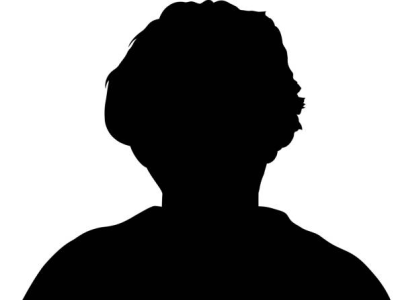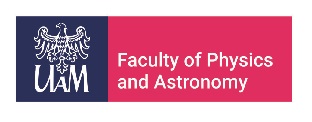
Dr. Shilan Ismael Abo
Former Member of ISQI
Publications
2024 |
|
| 4. | Shilan Abo, Patrycja Tulewicz, Karol Bartkiewicz, Şahin K Özdemir, Adam Miranowicz Experimental Liouvillian exceptional points in a quantum system without Hamiltonian singularities New Journal of Physics, 26 (12), pp. 123032, 2024. @article{Abo_2024, title = {Experimental Liouvillian exceptional points in a quantum system without Hamiltonian singularities}, author = {Shilan Abo and Patrycja Tulewicz and Karol Bartkiewicz and Şahin K Özdemir and Adam Miranowicz}, url = {https://dx.doi.org/10.1088/1367-2630/ad98b6}, doi = {10.1088/1367-2630/ad98b6}, year = {2024}, date = {2024-12-01}, journal = {New Journal of Physics}, volume = {26}, number = {12}, pages = {123032}, publisher = {IOP Publishing}, abstract = {Hamiltonian exceptional points (HEPs) are spectral degeneracies of non-Hermitian Hamiltonians describing classical and semiclassical open systems with losses and/or gain. However, this definition overlooks the occurrence of quantum jumps in the evolution of open quantum systems. These quantum effects are properly accounted for by considering quantum Liouvillians and their exceptional points (LEPs). Specifically, an LEP corresponds to the coalescence of two or more eigenvalues and the corresponding eigenmatrices of a given Liouvillian at critical values of external parameters (Minganti et al 2019 Phys. Rev. A 100 062131). Here, we explicitly describe how standard quantum process tomography, which reveals the dynamics of a quantum system, can be readily applied to detect and characterize quantum LEPs of quantum non-Hermitian systems. We conducted experiments on an IBM quantum processor to implement a prototype model with one-, two-, and three qubits simulating the decay of a single qubit through competing channels, resulting in LEPs but not HEPs. Subsequently, we performed tomographic reconstruction of the corresponding experimental Liouvillian and its LEPs using both single- and two-qubit operations. This example underscores the efficacy of process tomography in tuning and observing LEPs even in the absence of HEPs.}, keywords = {}, pubstate = {published}, tppubtype = {article} } Hamiltonian exceptional points (HEPs) are spectral degeneracies of non-Hermitian Hamiltonians describing classical and semiclassical open systems with losses and/or gain. However, this definition overlooks the occurrence of quantum jumps in the evolution of open quantum systems. These quantum effects are properly accounted for by considering quantum Liouvillians and their exceptional points (LEPs). Specifically, an LEP corresponds to the coalescence of two or more eigenvalues and the corresponding eigenmatrices of a given Liouvillian at critical values of external parameters (Minganti et al 2019 Phys. Rev. A 100 062131). Here, we explicitly describe how standard quantum process tomography, which reveals the dynamics of a quantum system, can be readily applied to detect and characterize quantum LEPs of quantum non-Hermitian systems. We conducted experiments on an IBM quantum processor to implement a prototype model with one-, two-, and three qubits simulating the decay of a single qubit through competing channels, resulting in LEPs but not HEPs. Subsequently, we performed tomographic reconstruction of the corresponding experimental Liouvillian and its LEPs using both single- and two-qubit operations. This example underscores the efficacy of process tomography in tuning and observing LEPs even in the absence of HEPs. |
2023 |
|
| 3. | Shilan Abo, Jan Soubusta, Kateřina Jiráková, Karol Bartkiewicz, Antonín Černoch, Karel Lemr, Adam Miranowicz Experimental hierarchy of two-qubit quantum correlations without state tomography Scientific Reports, 13 (1), pp. 8564, 2023, ISSN: 2045-2322. @article{abo_experimental_2023, title = {Experimental hierarchy of two-qubit quantum correlations without state tomography}, author = {Shilan Abo and Jan Soubusta and Kateřina Jiráková and Karol Bartkiewicz and Antonín Černoch and Karel Lemr and Adam Miranowicz}, url = {https://www.nature.com/articles/s41598-023-35015-9}, doi = {10.1038/s41598-023-35015-9}, issn = {2045-2322}, year = {2023}, date = {2023-05-26}, urldate = {2023-10-18}, journal = {Scientific Reports}, volume = {13}, number = {1}, pages = {8564}, abstract = {A Werner state, which is the singlet Bell state affected by white noise, is a prototype example of states, which can reveal a hierarchy of quantum entanglement, steering, and Bell nonlocality by controlling the amount of noise. However, experimental demonstrations of this hierarchy in a sufficient and necessary way (i.e., by applying measures or universal witnesses of these quantum correlations) have been mainly based on full quantum state tomography, corresponding to measuring at least 15 real parameters of two-qubit states. Here we report an experimental demonstration of this hierarchy by measuring only six elements of a correlation matrix depending on linear combinations of two-qubit Stokes parameters. We show that our experimental setup can also reveal the hierarchy of these quantum correlations of generalized Werner states, which are any two-qubit pure states affected by white noise.}, keywords = {}, pubstate = {published}, tppubtype = {article} } A Werner state, which is the singlet Bell state affected by white noise, is a prototype example of states, which can reveal a hierarchy of quantum entanglement, steering, and Bell nonlocality by controlling the amount of noise. However, experimental demonstrations of this hierarchy in a sufficient and necessary way (i.e., by applying measures or universal witnesses of these quantum correlations) have been mainly based on full quantum state tomography, corresponding to measuring at least 15 real parameters of two-qubit states. Here we report an experimental demonstration of this hierarchy by measuring only six elements of a correlation matrix depending on linear combinations of two-qubit Stokes parameters. We show that our experimental setup can also reveal the hierarchy of these quantum correlations of generalized Werner states, which are any two-qubit pure states affected by white noise. |
| 2. | Alberto Mercurio, Shilan Abo, Fabio Mauceri, Enrico Russo, Vincenzo Macrì, Adam Miranowicz, Salvatore Savasta, Omar Di Stefano Pure Dephasing of Light-Matter Systems in the Ultrastrong and Deep-Strong Coupling Regimes Phys. Rev. Lett., 130 , pp. 123601, 2023. @article{Mercurio2023, title = {Pure Dephasing of Light-Matter Systems in the Ultrastrong and Deep-Strong Coupling Regimes}, author = {Alberto Mercurio and Shilan Abo and Fabio Mauceri and Enrico Russo and Vincenzo Macrì and Adam Miranowicz and Salvatore Savasta and Omar Di Stefano}, url = {https://link.aps.org/doi/10.1103/PhysRevLett.130.123601}, doi = {10.1103/PhysRevLett.130.123601}, year = {2023}, date = {2023-03-21}, journal = {Phys. Rev. Lett.}, volume = {130}, pages = {123601}, abstract = {Pure dephasing originates from the nondissipative information exchange between quantum systems and environments, and plays a key role in both spectroscopy and quantum information technology. Often pure dephasing constitutes the main mechanism of decay of quantum correlations. Here we investigate how pure dephasing of one of the components of a hybrid quantum system affects the dephasing rate of the system transitions. We find that, in turn, the interaction, in the case of a light-matter system, can significantly affect the form of the stochastic perturbation describing the dephasing of a subsystem, depending on the adopted gauge. Neglecting this issue can lead to wrong and unphysical results when the interaction becomes comparable to the bare resonance frequencies of subsystems, which correspond to the ultrastrong and deep-strong coupling regimes. We present results for two prototypical models of cavity quantun electrodynamics: the quantum Rabi and the Hopfield model.}, keywords = {}, pubstate = {published}, tppubtype = {article} } Pure dephasing originates from the nondissipative information exchange between quantum systems and environments, and plays a key role in both spectroscopy and quantum information technology. Often pure dephasing constitutes the main mechanism of decay of quantum correlations. Here we investigate how pure dephasing of one of the components of a hybrid quantum system affects the dephasing rate of the system transitions. We find that, in turn, the interaction, in the case of a light-matter system, can significantly affect the form of the stochastic perturbation describing the dephasing of a subsystem, depending on the adopted gauge. Neglecting this issue can lead to wrong and unphysical results when the interaction becomes comparable to the bare resonance frequencies of subsystems, which correspond to the ultrastrong and deep-strong coupling regimes. We present results for two prototypical models of cavity quantun electrodynamics: the quantum Rabi and the Hopfield model. |
2022 |
|
| 1. | Shilan Abo, Grzegorz Chimczak, Anna Kowalewska-Kudłaszyk, Jan Peřina Jr, Ravindra W. Chhajlany, Adam Miranowicz Scientific Reports, 12 , pp. 17655, 2022, ISSN: 2045-2322. @article{shilan2022, title = {Hybrid photon–phonon blockade}, author = {Shilan Abo and Grzegorz Chimczak and Anna Kowalewska-Kudłaszyk and Jan Peřina Jr and Ravindra W. Chhajlany and Adam Miranowicz }, url = {https://www.nature.com/articles/s41598-022-21267-4}, doi = {https://doi.org/10.1038/s41598-022-21267-4}, issn = {2045-2322}, year = {2022}, date = {2022-10-21}, journal = {Scientific Reports}, volume = {12}, pages = {17655}, abstract = {We describe a novel type of blockade in a hybrid mode generated by linear coupling of photonic and phononic modes. We refer to this effect as hybrid photon–phonon blockade and show how it can be generated and detected in a driven nonlinear optomechanical superconducting system. Thus, we study boson-number correlations in the photon, phonon, and hybrid modes in linearly coupled microwave and mechanical resonators with a superconducting qubit inserted in one of them. We find such system parameters for which we observe eight types of different combinations of either blockade or tunnelling effects (defined via the sub- and super-Poissonian statistics, respectively) for photons, phonons, and hybrid bosons. In particular, we find that the hybrid photon–phonon blockade can be generated by mixing the photonic and phononic modes which do not exhibit blockade.}, keywords = {}, pubstate = {published}, tppubtype = {article} } We describe a novel type of blockade in a hybrid mode generated by linear coupling of photonic and phononic modes. We refer to this effect as hybrid photon–phonon blockade and show how it can be generated and detected in a driven nonlinear optomechanical superconducting system. Thus, we study boson-number correlations in the photon, phonon, and hybrid modes in linearly coupled microwave and mechanical resonators with a superconducting qubit inserted in one of them. We find such system parameters for which we observe eight types of different combinations of either blockade or tunnelling effects (defined via the sub- and super-Poissonian statistics, respectively) for photons, phonons, and hybrid bosons. In particular, we find that the hybrid photon–phonon blockade can be generated by mixing the photonic and phononic modes which do not exhibit blockade. |

